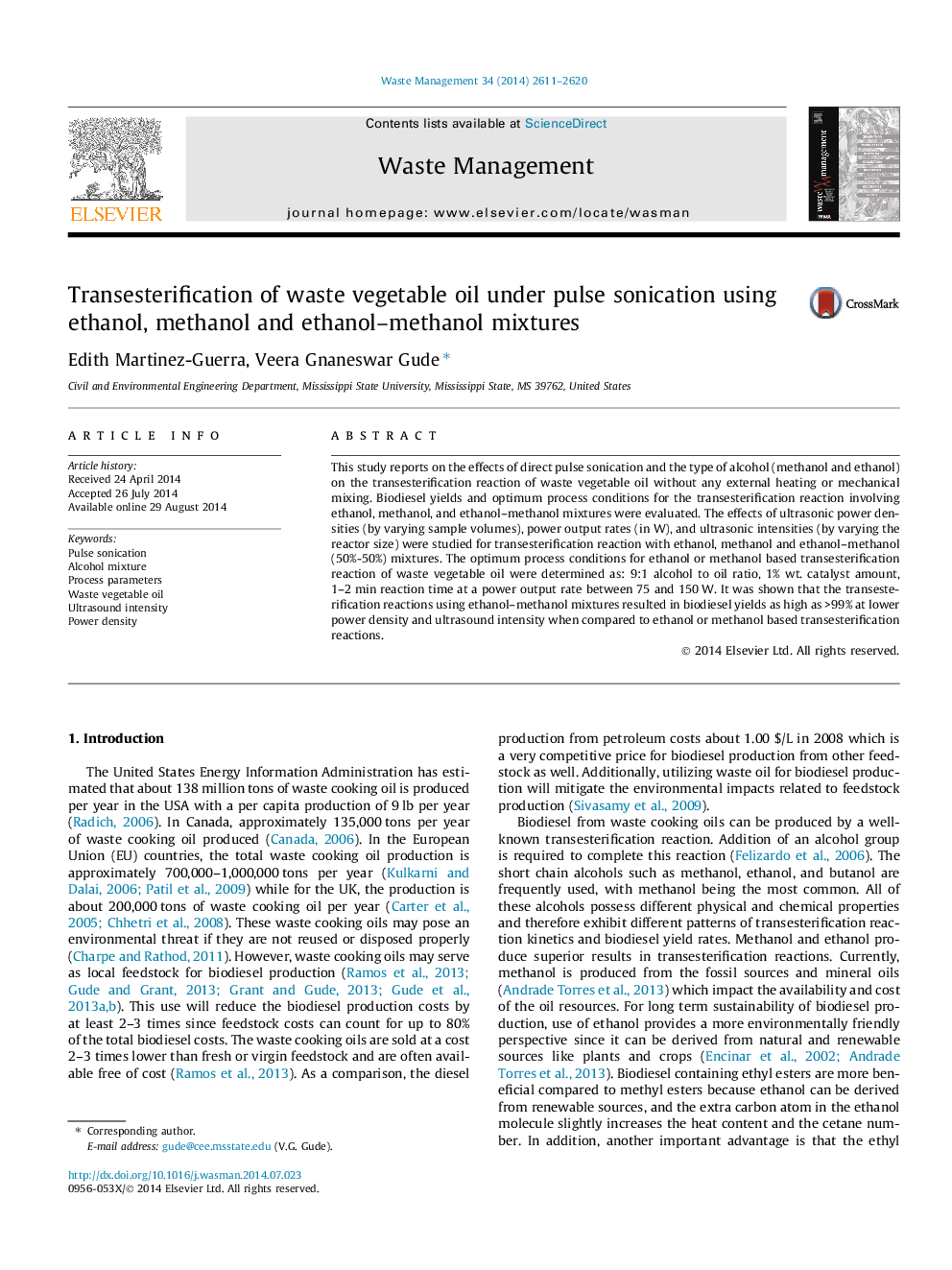| Article ID | Journal | Published Year | Pages | File Type |
|---|---|---|---|---|
| 4471598 | Waste Management | 2014 | 10 Pages |
•Pulse sonication effect on transesterification of waste vegetable oil was studied.•Effects of ethanol, methanol, and alcohol mixtures on FAMEs yield were evaluated.•Effect of ultrasonic intensity, power density, and its output rates were evaluated.•Alcohol mixtures resulted in higher biodiesel yields due to better solubility.
This study reports on the effects of direct pulse sonication and the type of alcohol (methanol and ethanol) on the transesterification reaction of waste vegetable oil without any external heating or mechanical mixing. Biodiesel yields and optimum process conditions for the transesterification reaction involving ethanol, methanol, and ethanol–methanol mixtures were evaluated. The effects of ultrasonic power densities (by varying sample volumes), power output rates (in W), and ultrasonic intensities (by varying the reactor size) were studied for transesterification reaction with ethanol, methanol and ethanol–methanol (50%-50%) mixtures. The optimum process conditions for ethanol or methanol based transesterification reaction of waste vegetable oil were determined as: 9:1 alcohol to oil ratio, 1% wt. catalyst amount, 1–2 min reaction time at a power output rate between 75 and 150 W. It was shown that the transesterification reactions using ethanol–methanol mixtures resulted in biodiesel yields as high as >99% at lower power density and ultrasound intensity when compared to ethanol or methanol based transesterification reactions.
Graphical abstractFigure optionsDownload full-size imageDownload as PowerPoint slide
